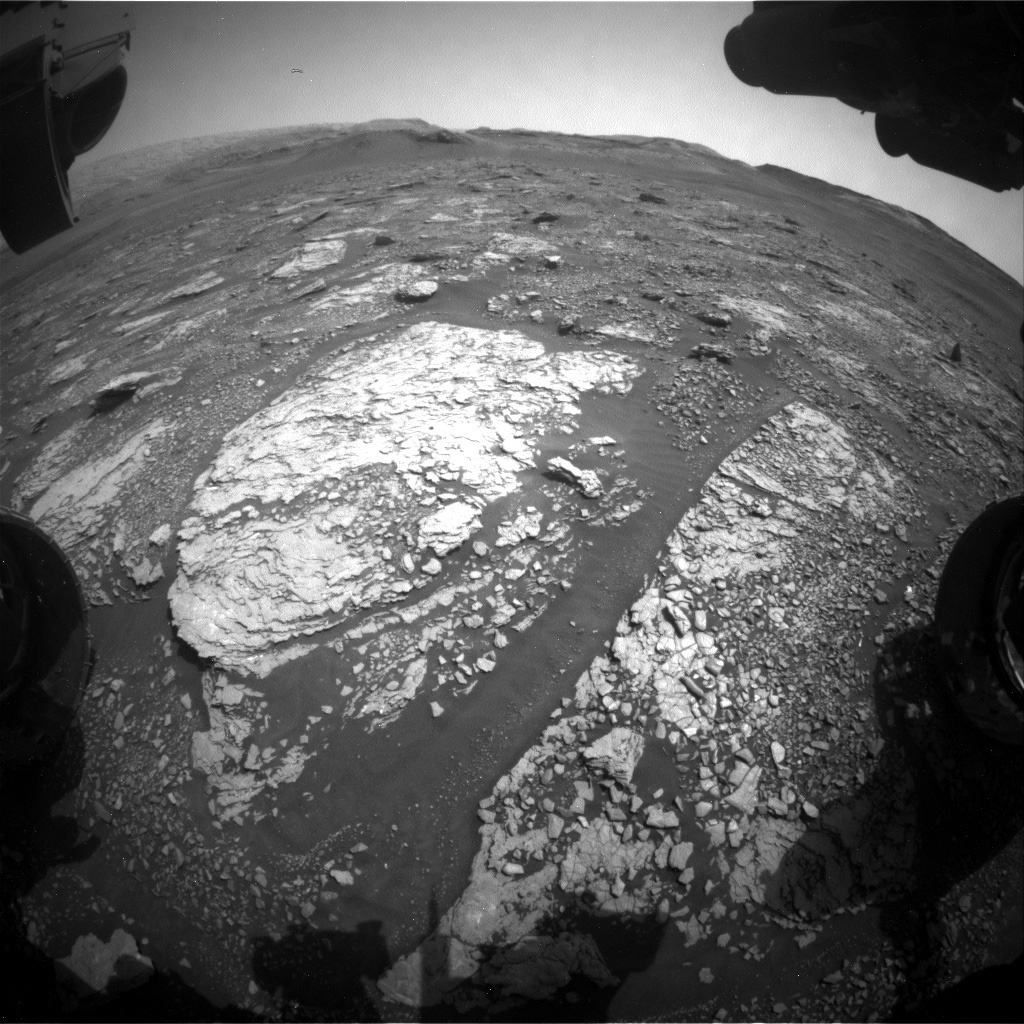2 min read

We are busy beginning our analysis of data from the SAM TMAH experiment (see blog post 2880-2882) - the first of its kind on Mars! However, we are also keeping Curiosity busy. Although contact science using MAHLI and APXS is precluded at this stage in the drill campaign (while samples are in the drill stem), the ChemCam and Mastcam teams are both working diligently on a "bedrock survey" of the workspace. The block in the centre of the image, containing both "Mary Anning" drill targets, is geochemically homogenous. Conducting the TMAH experiment on top of our standard CheMin and SAM analyses required a greater amount of sample than we could collect from a single drill hole, so having a geochemically homogenous block was important in allowing us to collect samples with similar compositions from two different drills holes.
Beyond this block, targets are a little more heterogenous and show subtle variations in the concentrations of major element geochemistry. As the ChemCam LIBS instrument can analyze targets up to 7 metres from the rover, it is being used very intensively to document trends across the workspace, and Mastcam is taking supporting images of each ChemCam target. Today's plan includes ChemCam and Mastcam on a further two bedrock targets "Prestonpans" and "Clivocast," as we try to fill in gaps in the survey. Additionally, Mastcam will take three change detection images, one centred around the sandy target "Upper Ollach," a second image across the rover deck and another of the Mary Anning drill holes themselves.
ChemCam will also take some RMI (long distance) images of the "Housedon Hill" target, a raised feature to the east of the rover. Based on initial images taken on sol 2880, ChemCam is refining and targeting more specific areas so that we can investigate the relationship between apparent bedding planes and the surface of the feature, all from a distance of 400 metres!
The environmental theme group (ENV) segment of today's plan includes some Navcam dust devil movies, Mastcam "tau" measurements to determine the concentration of dust in the atmosphere, in addition to the standard REMS and DAN activities which are always peppered throughout a given plan.
Written by Catherine O'Connell-Cooper, Planetary Geologist at University of New Brunswick







